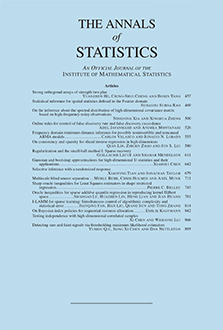Abstract
A feature that distinguishes extreme-value contexts from more conventional statistical problems is that in the former we often wish to make predictions well beyond the range of the data. For example, one might have a 10-year sequence of observations of a phenomenon, and wish to make forecasts for the next 20 to 30 years. It is generally unclear how such long ranges of extrapolation affect prediction. In the present paper, and for extremes from a distribution with regularly varying tails at infinity, we address this problem. We approach it in two ways: first, from the viewpoint of predictive inference under a model that is admittedly only approximate, and where the errors of greatest concern are caused by the interaction of long-range extrapolation with model misspecification; second, where the model is accurate but errors arise from a combination of extrapolation and the fact that the method is only approximate. In both settings we show that, in a way which can be defined theoretically and confirmed numerically, one can make predictions exponentially far into the future without committing serious errors.
Citation
Peter Hall. Liang Peng. Nader Tajvidi. "Effect of extrapolation on coverage accuracy of prediction intervals computed from Pareto-type data." Ann. Statist. 30 (3) 875 - 895, June 2002. https://doi.org/10.1214/aos/1028674844
Information





